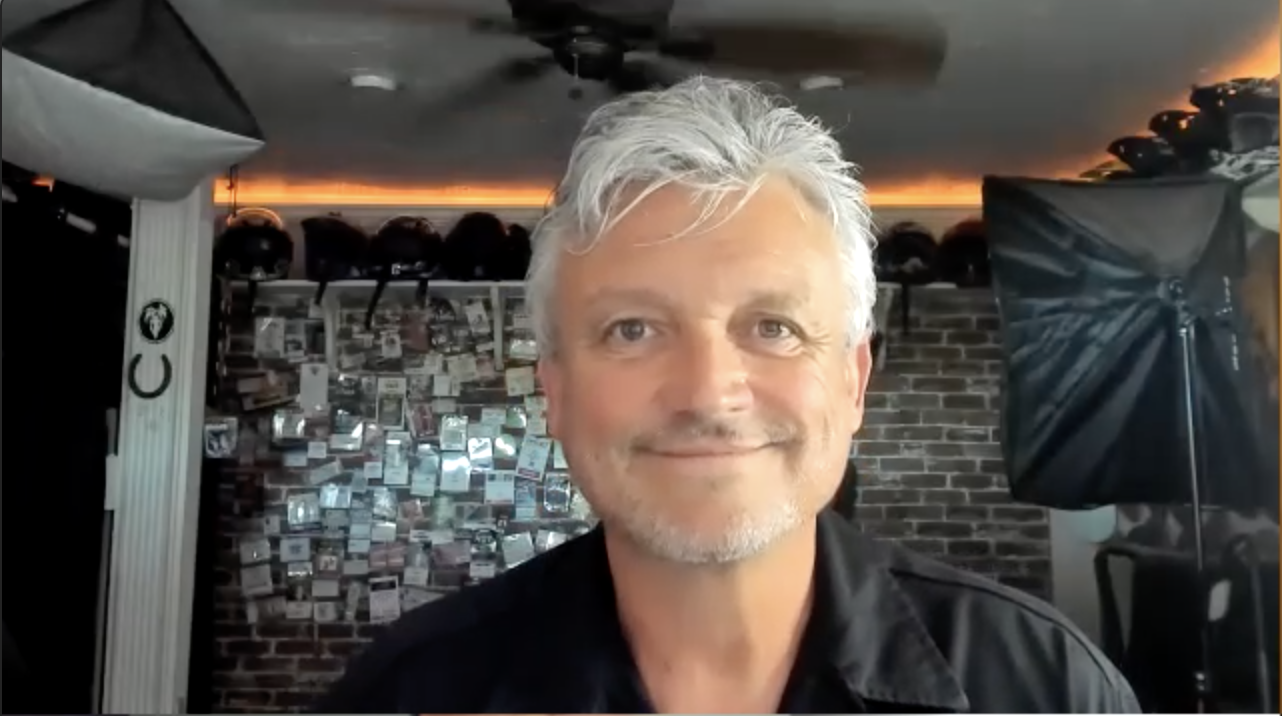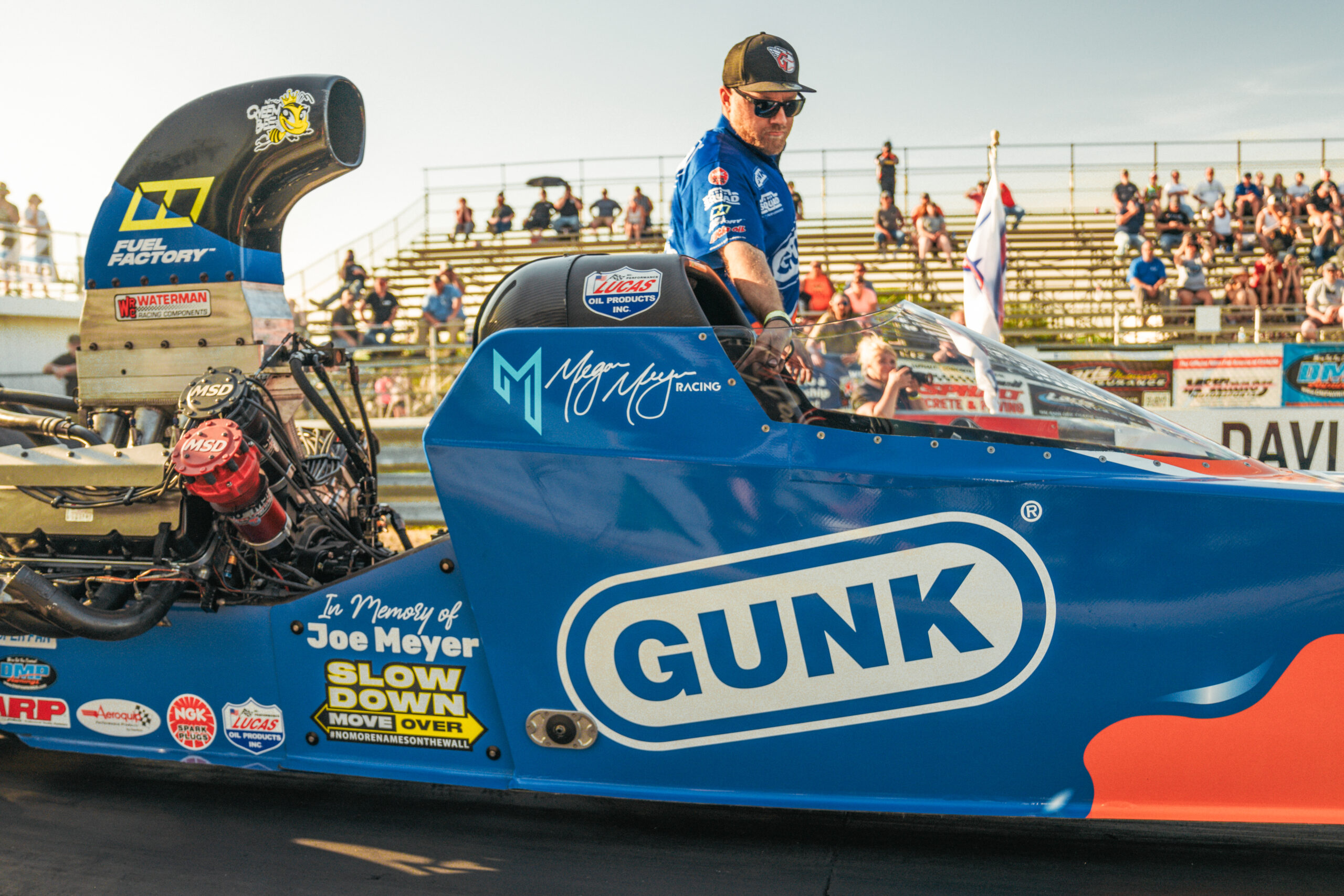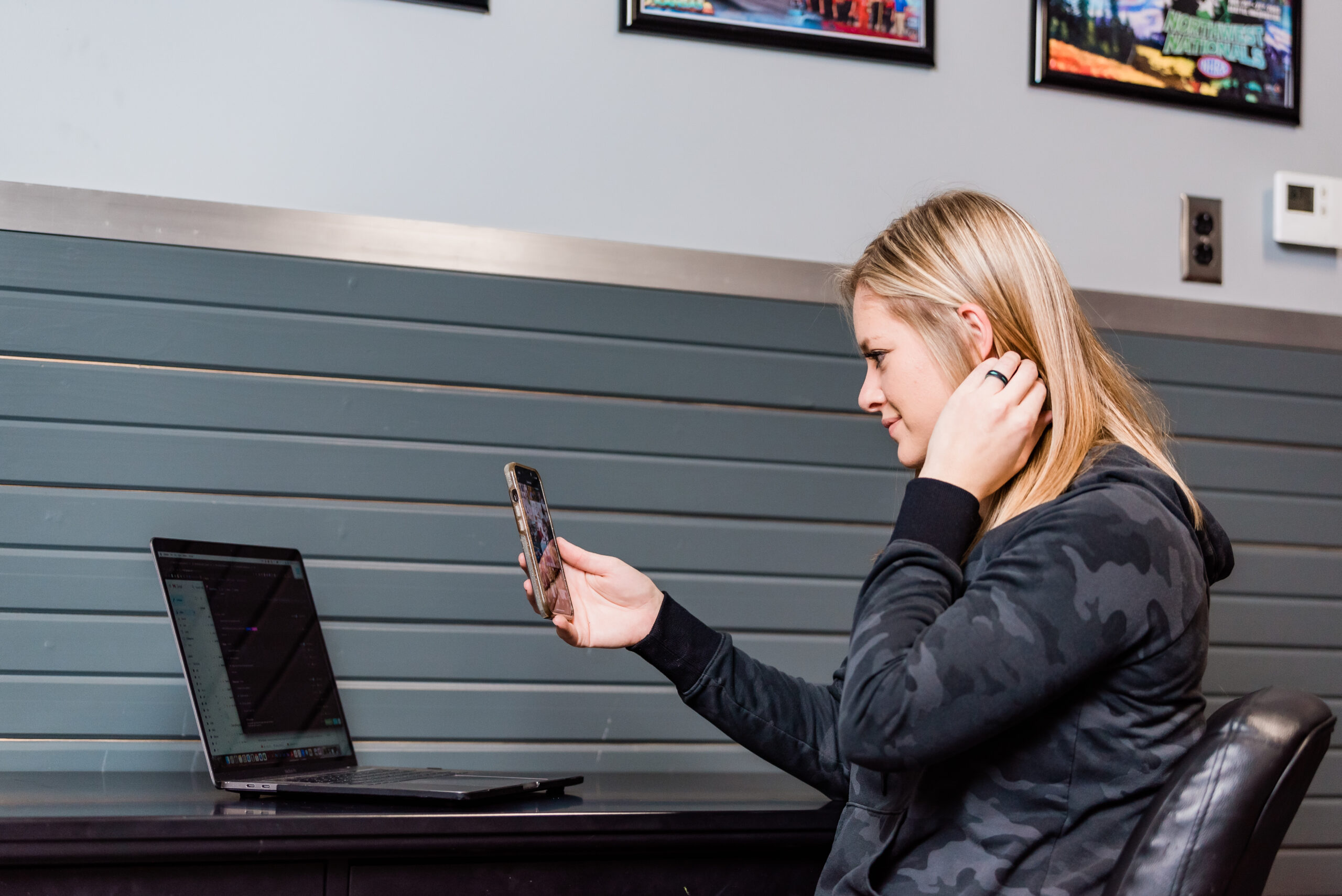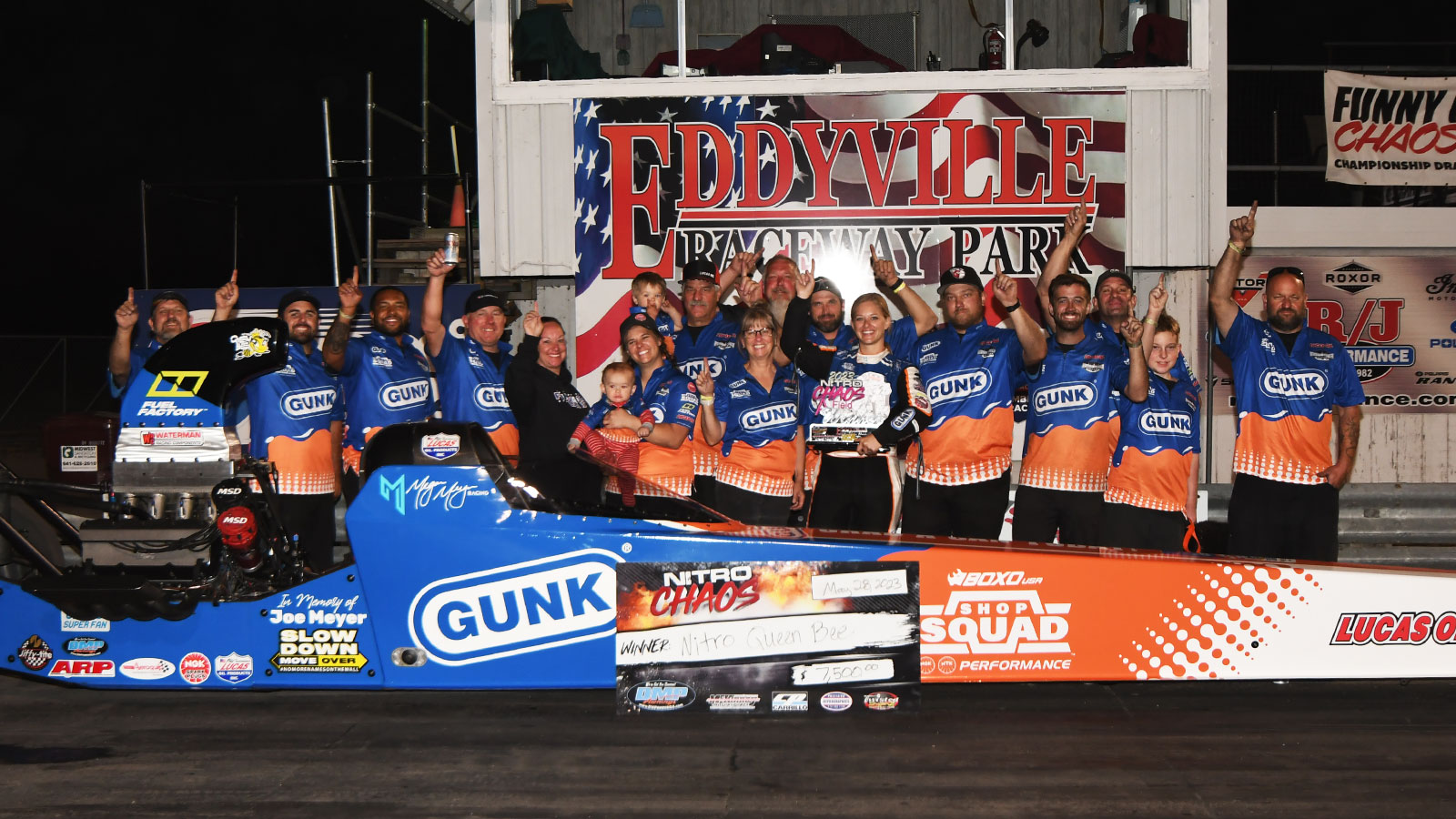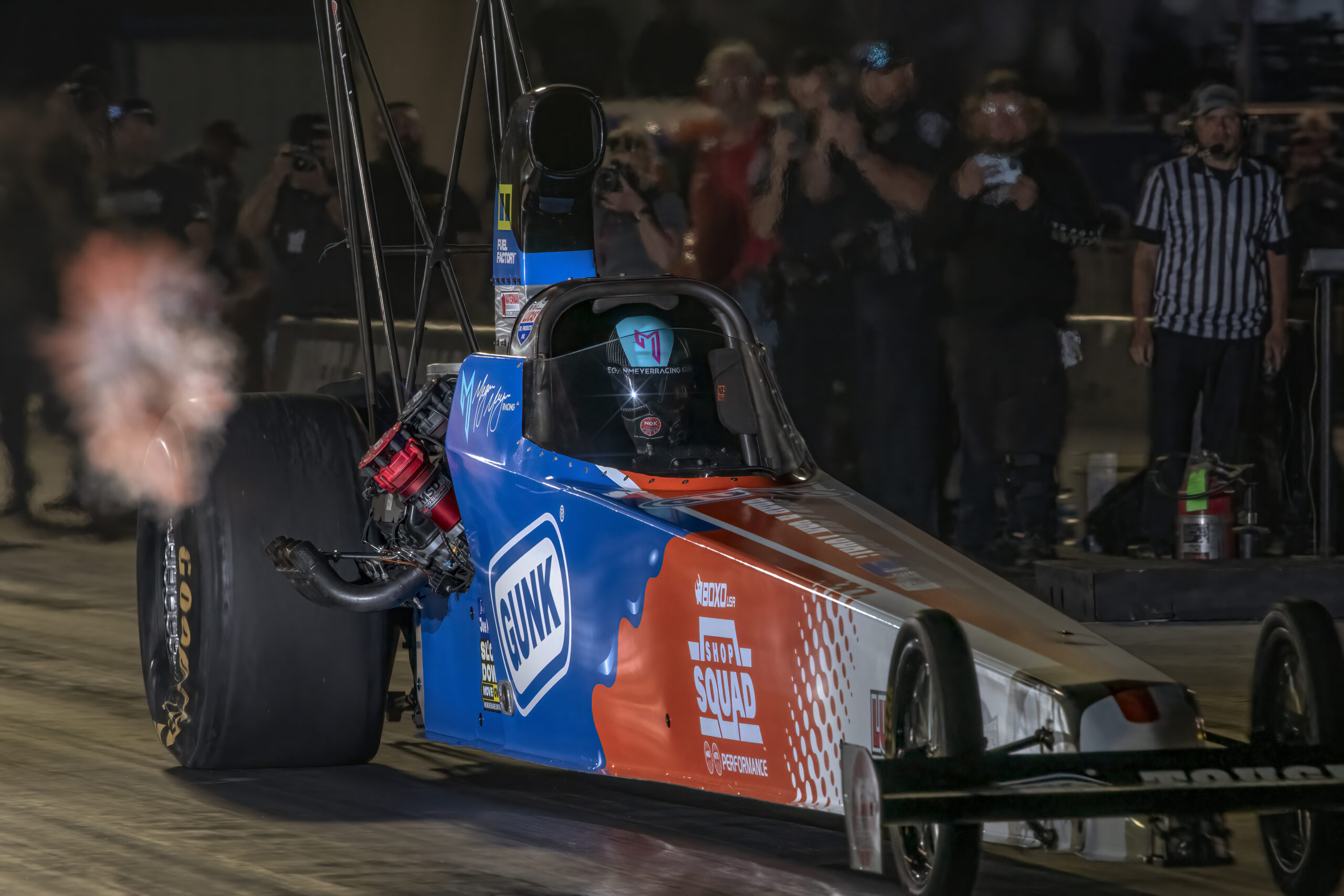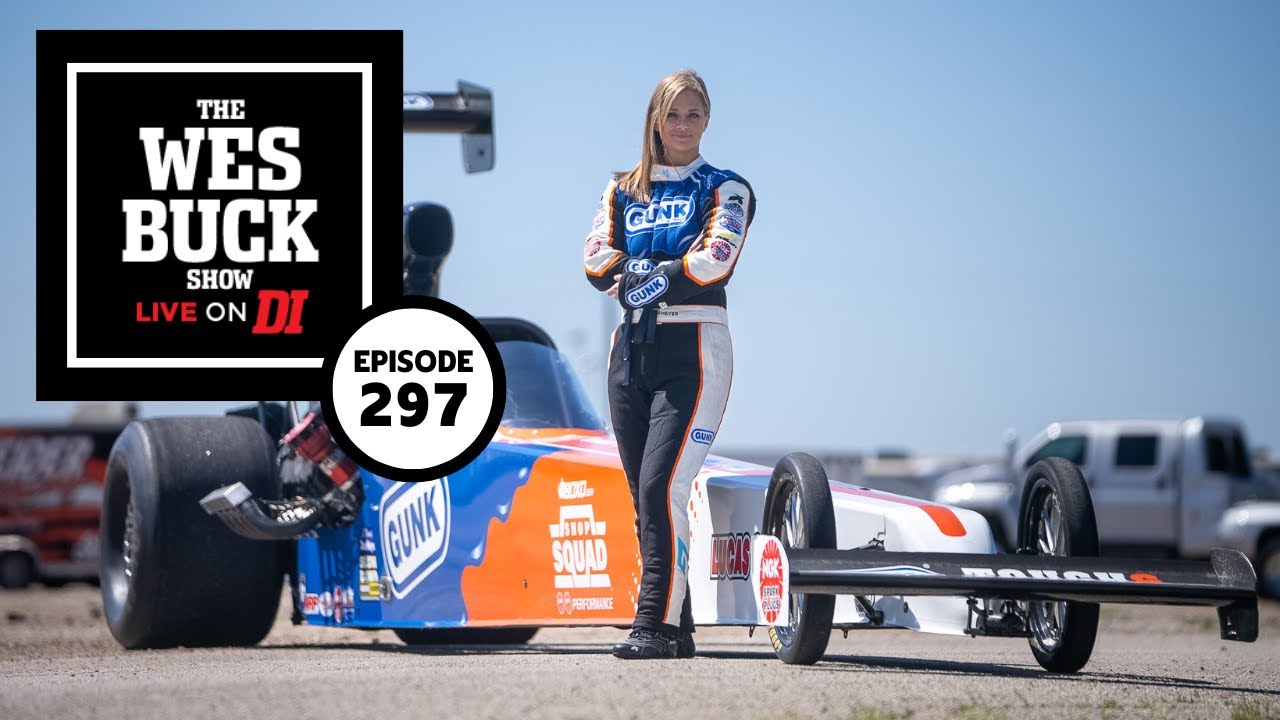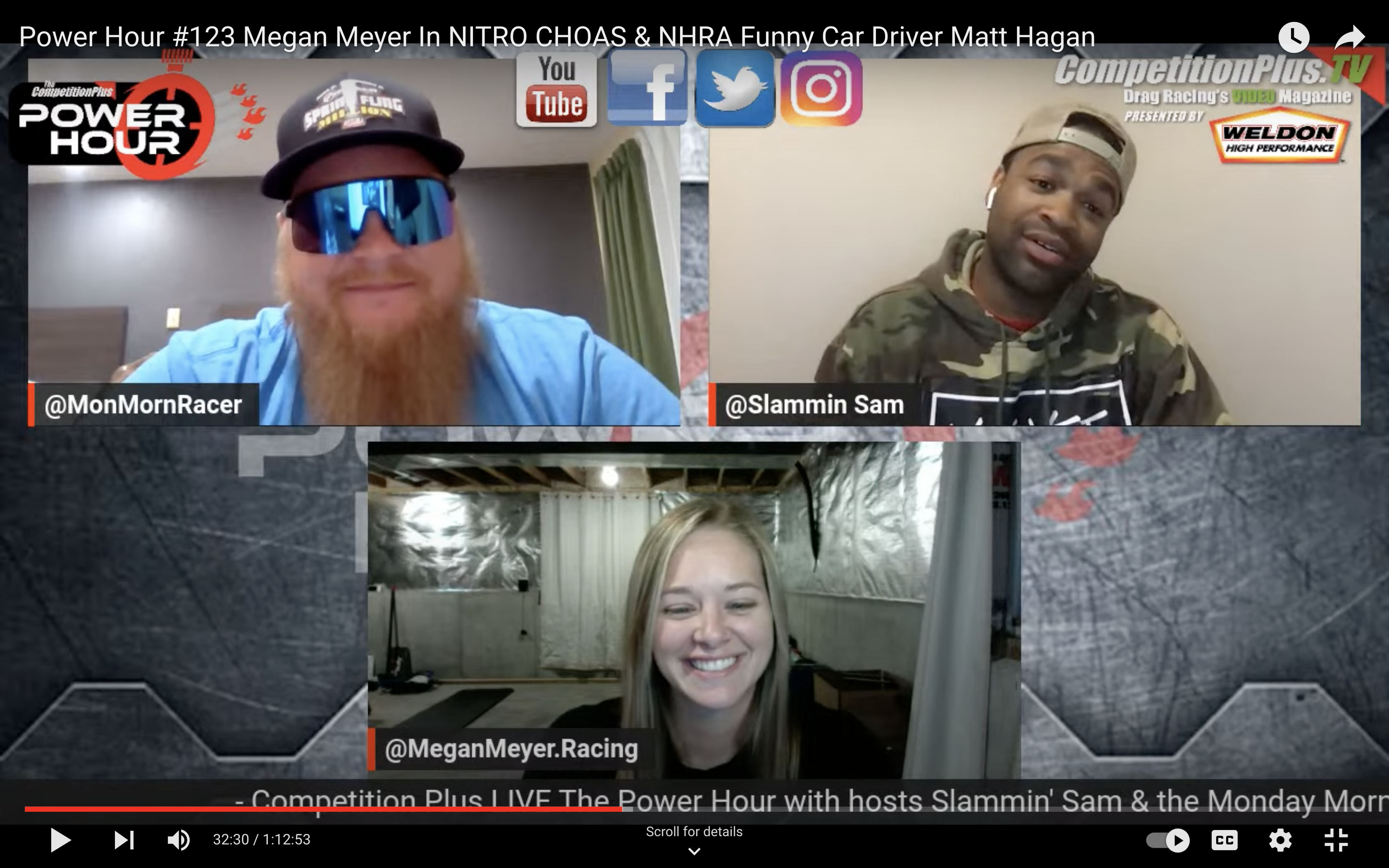Megan Meyer: I get frequently asked; how can a racer get upgraded from a product sponsorship to a monetary sponsorship. So they start out with the company sending them products for free for a shoutout on social media or a review. How then can a racer turn that into a monetary sponsorship for the next year?
Alex Striler: So what’s cool is that the last session [of the Motorsports Sponsorship Virtual Summit] is a sponsorship success story. I got a message about two years ago from a guy I did not know asking if I’d review his deck for him. It was pretty good and I said, “you know who would like this? Mark over at Eibach Springs? And he went to Eibach Springs for a product sponsorship and he got it. He impressed them with the things that he did all year long and he was moved to Eibach Springs primary the next year. So we’re going to talk about that during the final session.
In general, when we’re talking about going from product to dollars, instead of a team going to a company and saying “I need money! I need money to race, will you sponsor me?” a better approach is to say, “I’m going to all these races, I’m going to be in front of all this media, I’m going to have activation with all these customers in all these markets and I’m looking for a marketing partner. We’re looking for a partner in marketing to position alongside us on our delivery if they help play for our marketing plan. So Mr. Marketer, if you want to reach the markets I’m reaching and you want to piggyback on my work, sponsor my program by buying media—I’ll use the money to buy media for both of us.” That’s usually the first way to start getting money for some videos or some placements. That’s how Jason started doing it with Eibach, he started making videos that would’ve cost them a fortune to make on their own, so they started paying him for the videos and paying more money as the season progressed.
So I think the best way to start is not to ask for the money but to ask for a partner in marketing, who will spend money on marketing for both parties’ benefits.
MM: I like how you said they could sponsor by “buying media”. I think that’s a unique way to say that. I think a lot of racers get stuck in the older terms of “the race car or the trailer is a billboard” and you’re paying to put the logo on the billboard, instead talking about it as “buying media” is really helpful.
Alex: Yeah, say that you’re a race team that’s done everything on the mechanical, racing side of things but now you need a media partner. I need someone who can take everything I have and make media out of it and I’ll share in the visibility with that brand. And that’s a great way to get some sponsors! The sponsor needs content and they’re going to pay for media anyway.
MM: I especially like User Generated Content, is that something you see sponsors needing more of, whether that’s in social media or for commercials or any kind of advertising?
Alex: 100%. I think that’s the top of the list these days, rather than the logo placements. This kind of content is what sponsors want. And the problem is that most racers and most beginners in social media, those who are just learning how to market themselves, don’t yet really know what the tools are.
One of the best ways to learn is to follow the success of models and influencers and others who are really successful at promoting products on social media and copy them. What seems to be really working right now is being of value to the brand and being that media arm in the market and doing what the brand can’t do and can’t reach because they don’t have the resources. So if you as the racer can be that resource, then that usually results in payment or relationship in the long term.

MM: So one of those new arms is SIM racing which I’ve never done before and I know is one of our sessions at the Motorsports Sponsorship Virtual Summit, so can you give me a little preview of what we’re going to learn there?
Alex: Well, I know that it’s an increasing asset and an increasing deliverable. It’s still small but growing rapidly, and in 5-10 years will have significant value when the virtual and SIM racing companies learn how to promote sponsors.
I don’t know what the real value will come from but I know it’s more than just exposure, it has to be real engagement. Lots of times in virtual racing and online, youth have avatars. Like Tyler Blevins is Ninja and he won a Fortnite contest, and his avatar is the sponsored entity, not necessarily the race team. So a racer can have an online presence that’s parallel to their racing presence. For a 16, 17, or 18-year-old youth, this is where they live, that’s their community.
We’re going to learn from two guys who have done really well and have been in it the longest and learn about where that value comes from and how sponsors value that visibility. And we’ll talk about if a racer doesn’t race in sim how they can still use virtual racing to promote their sponsor in other ways. Just because you don’t race in sim doesn’t mean you can’t have a presence there.
MM: Yeah that’s what I’m doing right now in real life, getting into go-karts [laughs]. So one of the other sessions is about how to get into magazines. And the way that I’ve handled this is to get to know the editors, the writers, the photographers and build a relationship with them so that way when it’s time for a story they can reach out to us and if I have a sponsor promo or a special event coming up, and it’s great to have go-to media to reach out to. That’s how I’ve done it, but I’d love to hear your perspective.
Alex: For the last decade, I’ve been hearing, “TVs going away! Magazines are going away!” And some of that is true, but the good ones have stayed. And for a certain demographic, that’s all they read is magazines, they don’t read online stories. For younger demographics, they only read online stories and don’t read magazines. So the demographic of who’s reading magazines and newspapers is another piece of that puzzle of the market that you’re reaching to make sure you’re connecting with every possible person for that sponsor or brand.
Magazines and television aren’t the only way, but they’re great tools we have to use that most racers aren’t really looking in those directions because they think it’s unattainable or it’s only for the big names. They just don’t think they can’t get into a magazine, but it’s actually pretty easy to do. And once you’re in the magazine, that article could do digital and maybe even viral online. I don’t know any magazine that doesn’t replicate their articles digitally and post them online. By first getting into the print magazine, that opens the door for being online and it can be evergreen online to promote those brands that are in the article with you.
Marty and Dan from PRI and Racer Magazine are going to tell us their selection criteria for stories and content—and I’m just as curious as you are to hear what they have to say!
MM: So you talked about demographics. If a racer is looking to get into a magazine, how do they look at what the demographics are of that publication?
Alex: So all legitimate publications, from a radio show to a television show or a magazine or newspaper, they all have a rate card and a media kit. The rates are based on relative media value compared to other networks. And you can look at their cards and see who else they’re selling to and why they’re pricing their assets a certain way, why a 30-second ad is so much or a full-page ad, and it all comes down to demographics. During certain times of the day for TV or certain months of the year for magazines, certain people will read different magazines or watch different shows. So the pricing tends to fluctuate a little bit.
When you know if there’s a year-end calendar of events for the following year—like in a year-end issue, there’s usually a schedule of events for the following year, and a lot of people want that. If you can get an article into that issue and most enthusiastic fans will try to collect that magazine. Also, trade show issues, I’m guessing this one of the most-viewed issues, you see everyone at PRI walking around with the magazine!
If you’re looking to reach the maximum visibility for yourself, your team, and your sponsors, you have to be in all the media where your potential customers could be. Lots of people are still reading magazines and newspapers and watching television. Some good news is that while these seem to be declining, lots of the prices are falling too and becoming more affordable and the access is becoming greater. There’s such a huge competition for stories out there, so if you have a good story, people want to hear it. Dan and Marty are going to teach us some secrets to getting those stories into their magazines.
At the end of the day, even if you’re not winning races, if you can get into a magazine because you have a compelling story to tell, that still helps your sponsors. Sponsors want you to tell stories and magazines are a great place to tell them. No one remembers figures and facts and placements and statistics—everyone remembers a good story. Magazines are a great place to tell those long-lasting stories, that has a lot of long-term value for a brand, even more than the cost of the article in that magazine.
MM: So, to hear from Dan, Marty, Alex, and myself, we’re less than 10 days away from the Motorsports Sponsorship Virtual Summit.
Alex: We’ll also have some downloadable assets, I know I have a few things to give attendees to go along with the presentations.
A lot of this is starting with the basics—Sponsorship 101, what’s a deck, what’s a pitch, when do you use them, how do you create them, what do sponsors value, how do you approach people with them. It’s not about exposure, you don’t want to offer exposure—you want to present whatever that company perceives as value that you can provide. Different types of companies want different things, so we’ll talk about all that. Brand managers of different companies will talk about why they sponsor, what they’re looking for next year, where they find value, how you can create value for them.
It’ll be a very educational summit that will raise the value of all race teams and keep motorsports thriving. That’s the goal!
And if you have questions while you’re there and you don’t want to type them out right then, I’ll be hosting a special meeting to answer those questions for summit attendees if there are enough people who need more answers. We’ll host a private Zoom call for those attendees.
Register now for the Motorsports Sponsorship Virtual Summit! Use my code MM30 for 30% off your ticket until June 17,2022!
